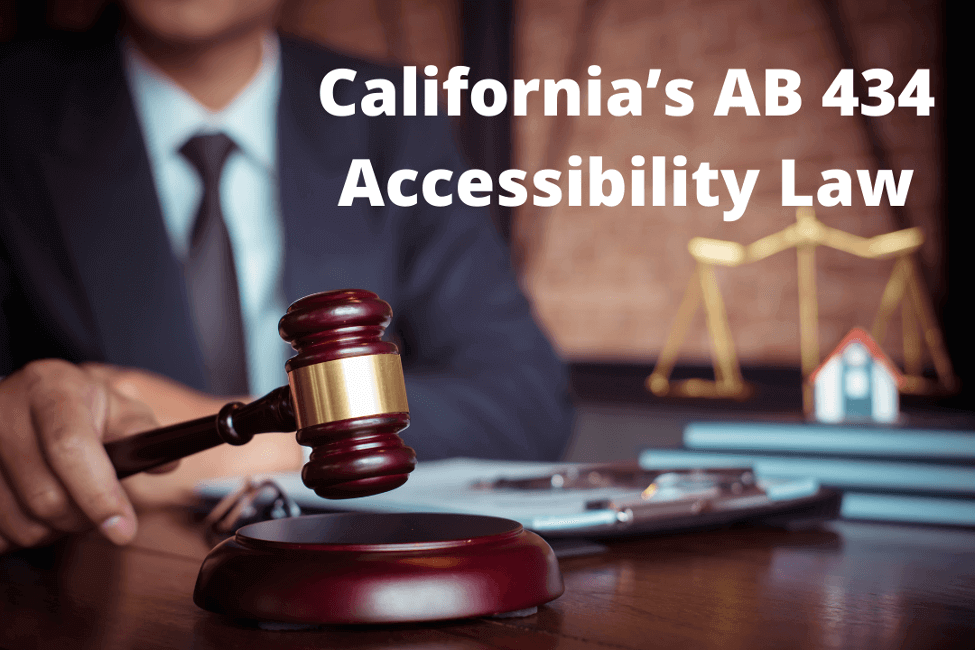California, the birthplace of Hollywood and home to aspiring actors who want to make it big in Hollywood. All of this wouldn’t happen if Hollywood preferred or gave chances to people only from California. This inclusive nature should not only be nurtured but should also continue till the end of time. The government of California integrated federal laws such as section 508 and ADA into its own legislation as the AB 434 Accessibility law in 2019.
Now, let us learn more about California’s AB 434 Accessibility law
Table of Contents
What is California’s AB 434 Accessibility law?
California is one of the few places that takes accessibility seriously. According to the California AB 434 accessibility (ABA 434) law, all state agencies in California, and any contractors working for them, must ensure that their websites are compliant with WCAG 2.0.
Now let’s dive into the details, the bill requires state agencies to meet the following conditions:
- They must display their conformance certificate on their homepage. The certificate needs to be approved and signed by the state entity’s director and chief information officer.
- They must meet at least level AA standards of WCAG 2.0
What are state agencies?
The government or state agency is a branch of government that carries out services of government. There are 4 types of agencies usually in the US government: cabinet departments, independent executive agencies, regulatory agencies, and government corporations.
Here are the agencies and entities defined under the California Government Code § 11546.1(e)
- Transportation Agency
- Department of Corrections and Rehabilitation
- Department of Veterans Affairs
- Business, Consumer Services, and Housing Agency
- Natural Resources Agency
- California Health and Human Services Agency
- California Environmental Protection Agency
- Labor and Workforce Development Agency
- Department of Food and Agriculture
What is WCAG?

The W3C community created the web content accessibility guidelines or popularly known as WCAG. These guidelines help organizations to make their content more accessible to people with disabilities. Currently, the organizations are following the WCAG 2.1 guidelines to make their web content accessible.
The WCAG has three different conformance levels
- Level A ( This is minimal conformance level)
- Level AA ( Medium conformance level which is the primary requirement in ABA 434)
- Level AAA ( Maximum conformance level)
What happens if your organization is only compliant with WCAG 2.0?
The latest version of WCAG, WCAG 2.1 was released in 2018, but does it make 2.0 invalid?
Fortunately, that is not true, the W3C takes care to introduce success criteria in such a way that it does not contradict its previous versions. However, that doesn’t mean you stop there, accessibility is not a “been there done that” exercise, it’s a continuous process. Therefore, keep updating your web content to comply with the newer versions of WCAG.
Also read: Ultimate Guide to Web Accessibility
Does California AB 434 law Affect Private Companies?
One might think since the bill only focuses on state agencies and their contractors, private entities are exempt from it. Although the bill does not affect private entities, ABA 434 is a prime example of an assembly bill using WCAG 2.0 and ADA as its basis for compliance. There are other laws that also use WCAG 2.0 as the basis for compliance such as Section 508, AODA, etc.
The business and private entities come under the purview of the Unruh civil rights act.
What is the Unruh Civil rights act?

All businesses including housing and public accommodation are prohibited from engaging in unlawful discrimination against all their consumers in California. Officially it is known as California civil code 51 and is usually referred to as Unruh civil rights act. The law also protects the basic rights of people with disabilities like using public places, public conveyances, guides, signals, or service animals or alternative accommodations, etc.
To make you understand it more easily, we have listed out some examples that are an embodiment of violation of the Unruh Civil rights act:
- A restaurant charging a service fee of $200 to only a specific race, color, or people with disabilities.
- A doctor refusing to treat a patient with STD such as HIV, syphilis
- A cab driver or store executive refusing to allow the guide dog of a visually impaired person inside their premises.
Penalties

Any violation of the Unruh Civil act will result in offenders coughing up a minimum of $4000 per offense. Penalties may look less for organizations with higher cash flow, however, penalties also dent its reputation. Furthermore, the penalties are nothing compared to the money burnt on defending the accessibility lawsuit.
How does your agency remain, AB 434, Unruh Civil Rights Act, or future laws regarding accessibility?

As organizations continue to make changes to their web content based on WCAG 2.1 recommendations, they may use automated or manual testing tools to check website accessibility and resolve their issue. The best practice is to use a combination of automated and manual testing methods to monitor website compliance.
At AEL Data, we have a team of specialists who carefully audit each web page to identify issues and remediate them. We also offer post-project transition support plans to ease your team into tackling issues when you go live.



